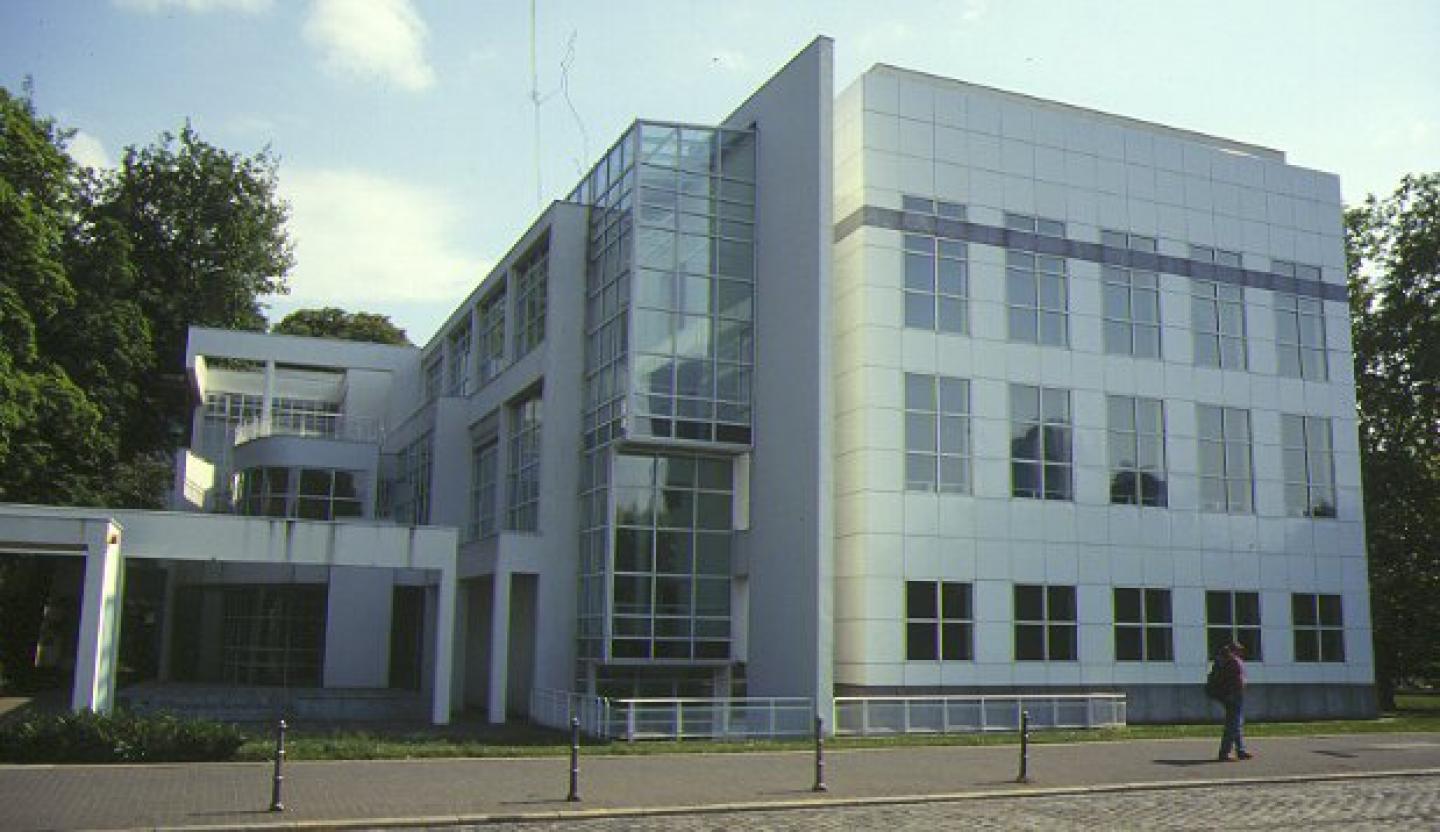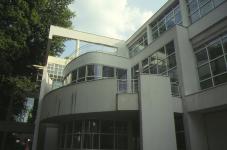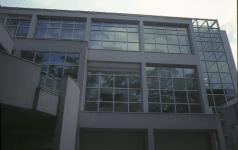Frankfurt Museum for applied arts
Urban form evolved between type and incident, fabric and discontinuity, history and the moment of design. This dialogue strongly influenced the design of the Museum for the Decorative Arts. The museum is emphatically a public and an urban institution, a rejection of modernist isolation of the building as a free-standing object distanced from its surroundings. The scheme connects, responds to, enlarges, and reinforces the public context and the urban fabric.The site on the south edge of the Main River is in proximity to several other museum buildings, which together form the Museumsufer, a venerable embankment of buildings fronting the water. The organizational grid of the new complex is derived primarily from two geometries: that of the existing Villa Metzler, a near-perfect cubic volume, and that of the slightly skewed angle of the site's river frontage. The superimposition of these two basic grids generates the design.Within, the building is dedicated to the Enlightenment concept that the museum is a place of education as much as of display. The architecture frames the exhibits in multiple ways, allowing the possibility of discovery and surprise as one views objects through different apertures. At the same time the architecture defers to the objects, permitting them to create their own environments and not overwhelming them. While the vocabulary and technology of the building are decisively modern, history is a constant presence in the dialogue between the architecture and its context.
1979
1985






